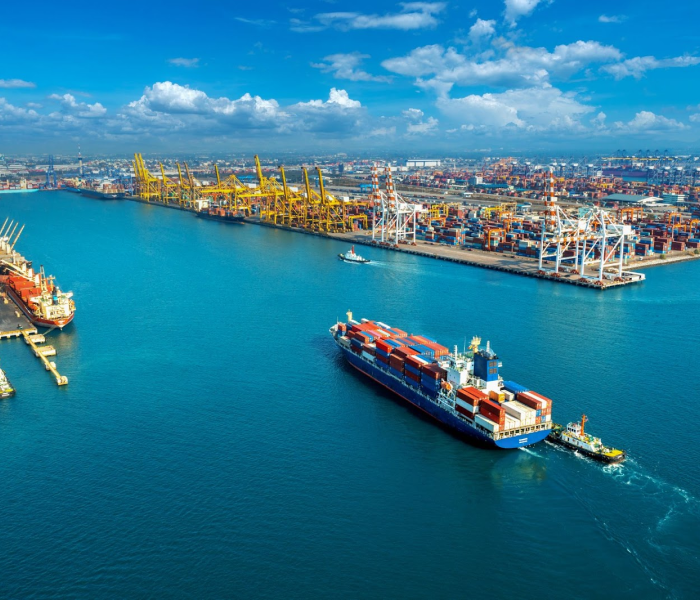A reliable supply chain is the backbone of any successful business, acting as the critical network that ensures goods are delivered on time, costs are optimized, and customers remain satisfied. Whether you’re a small startup or a large corporation, building a robust supply chain can help you navigate the complexities of global markets, mitigate risks, and scale your operations effectively. In today’s fast-paced and often unpredictable business environment, having a reliable supply chain is more important than ever.

But how exactly do you build a supply chain that is both efficient and resilient? In this blog, we’ll break down the key steps and strategies that can help you create a dependable supply chain for your business—one that can weather disruptions, deliver on customer expectations, and support long-term growth.
1. Understand Your Supply Chain Needs
Before you can build a reliable supply chain, it’s essential to understand what your specific needs are. This means considering factors such as the type of products you sell, the volume of goods you need to move, and the regions in which you operate.
Key Considerations:
- Product Complexity: Are you dealing with raw materials, finished goods, or customized products? More complex products may require a more intricate supply chain with specialized suppliers.
- Order Volume: High-volume businesses may need a more extensive supply chain to meet demand, whereas smaller operations may need something simpler and more agile.
- Geography: If you sell internationally, you’ll need a supply chain that can navigate customs, import/export regulations, and international shipping routes.
Mapping out your needs from the outset will give you a clearer picture of how to design your supply chain for maximum efficiency and reliability.
2. Choose the Right Suppliers and Partners
Suppliers are the cornerstone of your supply chain, so selecting the right ones is crucial. Reliable suppliers can make or break your ability to meet demand, maintain product quality, and control costs. A strong relationship with your suppliers not only helps reduce risks but also offers opportunities for collaboration, innovation, and cost savings.
Tips for Selecting Suppliers:
- Assess Reliability and Reputation: Look for suppliers with a proven track record of timely deliveries, quality products, and strong customer service. Online reviews, testimonials, and case studies can provide valuable insights.
- Evaluate Financial Stability: A financially stable supplier is more likely to weather economic fluctuations and stay in business long-term. Check their credit history, financial reports, and business longevity.
- Diversify Your Supplier Base: Relying on a single supplier for critical components can expose you to significant risk. Diversifying your supplier base ensures you have backup options if one supplier experiences delays or issues.
- Build Strong Relationships: Establishing trust and open communication channels with suppliers can foster long-term, mutually beneficial partnerships.
Key Questions to Ask Suppliers:
- How flexible is the supplier in terms of handling unexpected changes in demand?
- What are their delivery lead times and track record for meeting deadlines?
- Do they have contingency plans in place for natural disasters or supply disruptions?
3. Invest in Technology for Supply Chain Visibility
In the digital age, relying on outdated or manual systems to manage your supply chain can leave you vulnerable to inefficiencies, miscommunications, and unexpected disruptions. Technology is now essential for creating a supply chain that is both visible and responsive.
Key Technologies to Consider:
- Supply Chain Management (SCM) Software: Tools like SAP, Oracle, and others provide end-to-end visibility, helping you track inventory, manage suppliers, and optimize routes. These systems can help you monitor performance metrics like lead times, order accuracy, and delivery schedules.
- Enterprise Resource Planning (ERP): ERP software integrates various business functions, allowing you to link inventory management, procurement, production, and financials into a unified system.
- Cloud-Based Platforms: These platforms offer real-time data sharing across teams, suppliers, and partners, enabling faster decision-making and greater collaboration.
- Internet of Things (IoT): IoT devices, such as sensors and RFID tags, can track shipments in real time, monitor inventory levels, and provide visibility into product condition, helping to reduce losses and improve planning.
By investing in the right technology, you’ll have better control over your supply chain and the ability to respond quickly to changes in demand, inventory, or production.
4. Develop Strong Logistics and Distribution Channels
Once you have sourced your raw materials or products, logistics becomes the next crucial piece of the supply chain puzzle. Reliable logistics involve both warehousing and transportation, which together ensure that goods flow smoothly from point A to point B without delays or damage.
Best Practices for Logistics:
- Choose the Right Shipping Partners: Partner with reputable carriers that offer flexible shipping options, real-time tracking, and competitive pricing. Explore different shipping methods, such as air, sea, or land, based on cost-effectiveness and speed.
- Optimize Inventory Management: Implement Just-In-Time (JIT) inventory or Demand Forecasting models to balance the need for product availability with the cost of holding excessive stock. This can reduce overhead costs and prevent stockouts or overstocking.
- Warehouse Management: Invest in well-located warehouses that enable fast distribution. Consider leveraging cross-docking facilities that minimize handling time and speed up the supply chain.
The goal is to ensure that your goods move efficiently and without interruption, from procurement to delivery, regardless of any unforeseen challenges.
5. Risk Management and Contingency Planning
No supply chain is immune to disruptions—be it natural disasters, political instability, economic downturns, or unforeseen global events like pandemics. Building resilience into your supply chain is critical to maintaining reliability during times of crisis.
Key Strategies for Risk Management:
- Create a Contingency Plan: Map out scenarios for potential disruptions and identify backup plans. For example, if one supplier fails to deliver on time, do you have an alternative supplier lined up? If transportation routes are delayed, can you switch to another carrier or route?
- Regularly Assess Risks: Continuously monitor your supply chain for vulnerabilities and areas where risks may increase. This could involve assessing the financial stability of suppliers, monitoring geopolitical risks, or analyzing potential environmental impacts.
- Collaborate with Partners: Work with suppliers and logistics partners to develop joint risk mitigation strategies. Having clear communication channels and a shared understanding of how to handle disruptions can make recovery quicker and smoother.
- Maintain Buffer Stock: In some cases, it’s wise to keep a certain level of buffer stock to ensure you can meet customer demands in case of unexpected delays in production or delivery.
By proactively identifying and addressing risks, you can minimize disruptions and ensure your supply chain remains dependable, even in challenging times.
6. Focus on Continuous Improvement
Building a reliable supply chain isn’t a one-time effort—it’s an ongoing process that requires continuous improvement. As markets evolve, customer preferences change, and new technologies emerge, your supply chain must adapt to remain competitive and efficient.
Steps for Ongoing Improvement:
- Monitor Performance Metrics: Use key performance indicators (KPIs) like on-time delivery rates, order accuracy, supplier lead times, and inventory turnover to measure the effectiveness of your supply chain. Regular analysis can help identify bottlenecks or areas for improvement.
- Solicit Feedback: Gather feedback from your suppliers, customers, and logistics partners to identify pain points and opportunities for improvement. Open communication is essential for fine-tuning processes.
- Stay Current on Trends: Keep an eye on emerging trends like automation, artificial intelligence, blockchain, and sustainability efforts in supply chain management. Adopting these trends early can give you a competitive edge.
- Invest in Employee Training: Ensure that your team is well-trained in supply chain processes, technology, and risk management strategies. A knowledgeable team is essential for maintaining smooth operations and handling challenges.
Conclusion
Building a reliable supply chain for your business is essential for ensuring smooth operations, customer satisfaction, and long-term success. By understanding your unique needs, selecting the right suppliers and partners, investing in technology, and planning for risks, you can create a supply chain that is both efficient and resilient.
However, remember that a reliable supply chain is not a static concept—it requires ongoing attention and continuous improvement. By staying flexible, adapting to new technologies, and fostering strong relationships with your partners, you’ll be well on your way to building a supply chain that can withstand challenges and help your business thrive in the long run.


